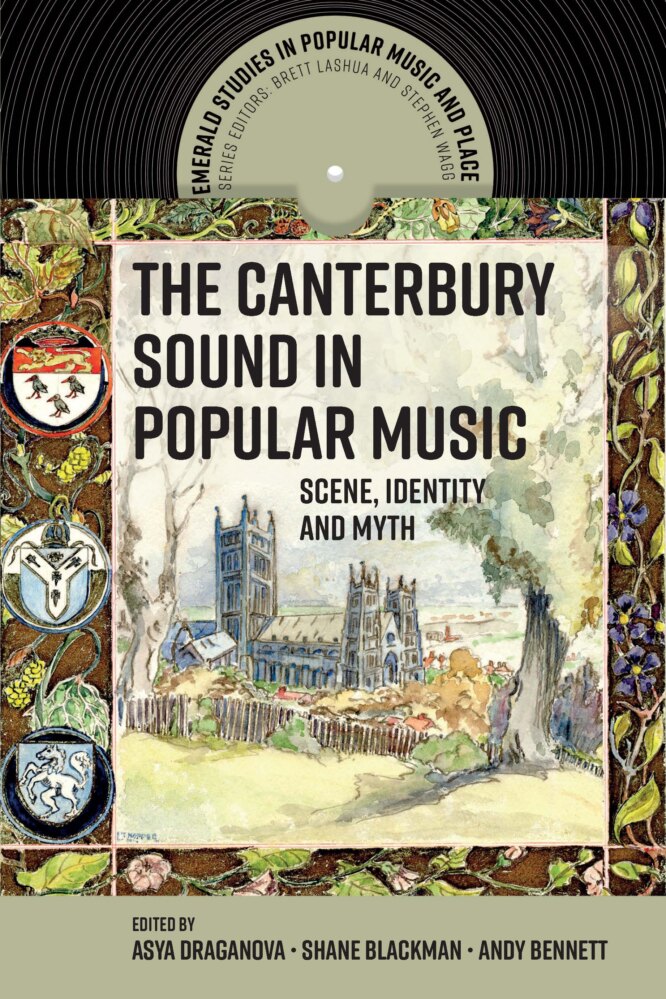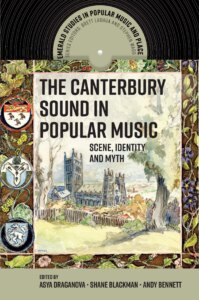The Canterbury Sound in Popular Music: Scene, Identity and Myth

The collection The Canterbury Sound in Popular Music: Scene Identity and Myth (Emerald), which I edited with Shane Blackman (Canterbury Christ Church University) and Andy Bennett (Griffith University) has been published today, 19 February 2021. For me, this publication is of both personal and professional significance because Canterbury remains one of my symbolic homes, and I find myself continually (re)imagining it through music.
This collection presents a unique exploration of the heritage and legacy of the Canterbury Sound: a signature style emerging in the 1960s that draws upon psychedelic music, progressive rock, jazz and pop to capture the real and imagined interactions between people, place and music.
The volume recounts the stories, and explores the significance, of the Canterbury Sound as heritage, ongoing legacy and scene. Originating from the experiences and ethnographic research of the three editors, all of whom have lived and worked in Canterbury, the book brings together reflections, stories, interviews, and critical insights from well-known musicians, researchers, DIY archivists and fans to explore the Canterbury Sound as an inter-generational phenomenon and a source of cultural identity. Associated with acts like Caravan, Soft Machine, Gong, Robert Wyatt, and Kevin Ayers, this romanticised scene has a special place in popular music culture.
Chapters examine the emergence of the Canterbury Sound and the related scene, including the legacies of key figures in forming the Canterbury Sound aesthetic, the documentation of the scene (online and off) and contemporary scenes within the city, which continues to attract and inspire young people.
Throughout the book, the Canterbury Sound is described as a site of the cultural imagination that carries allusions of authenticity and alternative artistic sensibilities: while acquiring a significant following around the world, particularly in France, Italy, Japan, and the USA, the Canterbury Sound never entered the musical spaces perceived as ‘mainstream’. In this context, the book is connects well to our BCMCR theme “Alternativity” 2020/21 which I have been co-ordinating with Charlotte Stevens.
The edited collection emerged from personal research experiences, through which Shane, Andy and I accessed networks of people linked to the cultural construction of the Canterbury Sound. In 2017, we organised a day-event that brought together diverse Canterbury Sound perspectives and musical takes presented through discussions, live music performances and exhibits of archival artefacts, literature and art. This book emerges from the networked insights into the genealogy of the Canterbury Sound, communicated and consolidated through that event. It includes contributions from members of bands including Soft Machine, Caravan, Hatfield and the North, Lapis Lazuli and solo musicians such as Billie Bottle, Maria Sullivan (Koloto), and Jack Hues. The collection also presents work from people who have been central to documenting the scene like Phil Howitt (Facelift Magazine), music writer Aymeric Leroy, and Marcus O’Dair (author of Robert Wyatt’s biography “Different Every Time”) and many more. There are many more authors I’d like to mention here but I am afraid of writing an overly-long blog post…
For more information about the volume and full contents, please visit the Emerald site. If you are interested in the book, or would like to order it for a library/institution, it might be useful to know that there is 30% discount available when using the publisher’s site; please feel free to use the code EMERALD30.
I will be posting again soon, to invite you to a book launch as part of the BCMCR seminar series on 24 March online. The discussion at the event will be led by Dr Sarah Hill (Cardiff University) and will feature the editors and many of the contributors to the edited collection. I hope to see many of you there.
